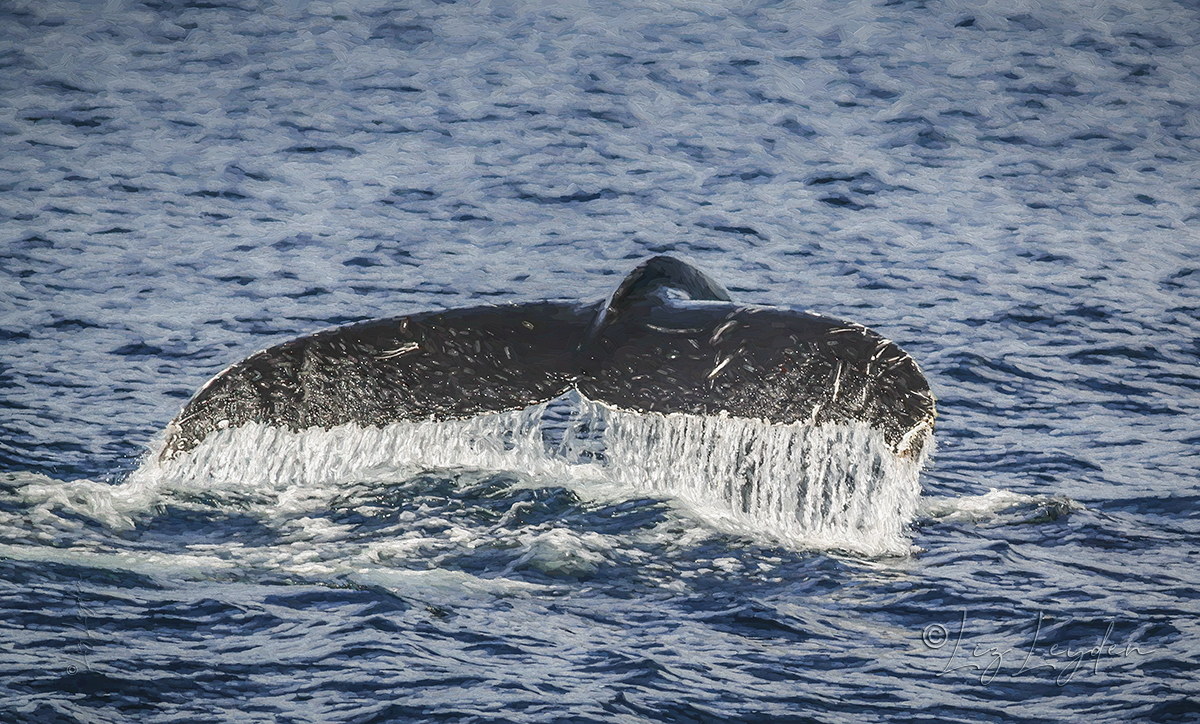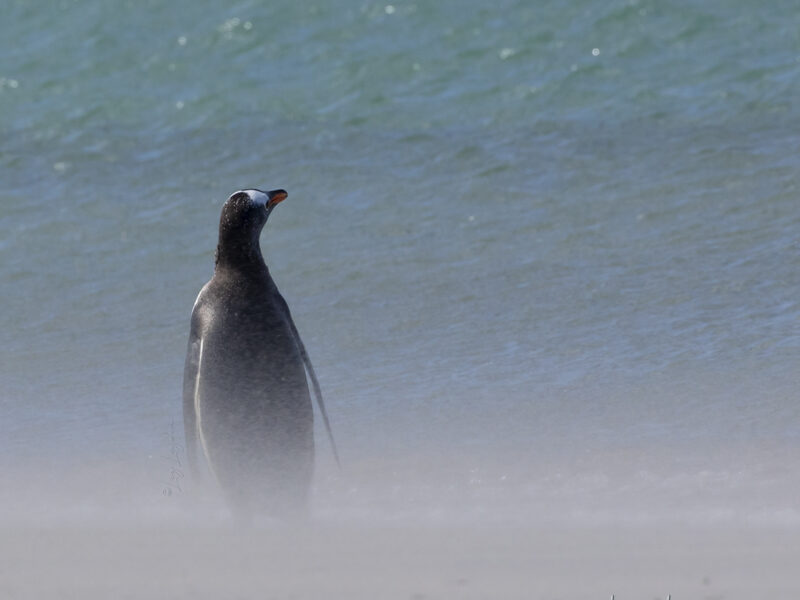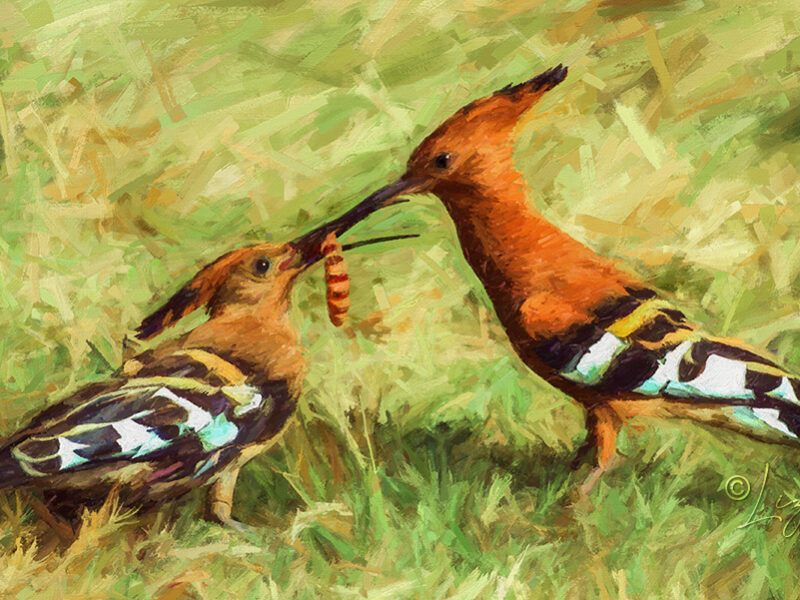The tail fluke of a Humpback Whale, Megaptera novaeangliae, diving after Capelin in Witless Bay, Newfoundland, Canada.
When you go to Newfoundland to watch whales, you are hoping to catch the ‘Capelin roll’ or ‘Capelin run’, the time when the maximum number of Capelin (a small fish relted to smelt) are swimming. However, as with most things in nature, the exact date isn’t predictable, so if travelling a long distance, as I was, you need a good dose of luck. I was very fortunate that I hit the Capelin roll exactly during my visit, so a lot of whales: mostly Humpbacks with Minkes and Sperm Whales, were in Witless Bay at the same time. My whale-watching trips were out of Bay Bulls, a small fishing town near the Newfoundland capital of St John.
A graduate student, Kelsey Johnson, did her Masters research on what Humpbacks off Newfoundland eat, and found it was mostly Capelin – and not much else!
Using field-collected tissue samples and stable isotope techniques, Kelsey’s research—in collaboration with Professor Gail K. Davoren—confirmed that capelin are the primary prey humpback whales eat, even decades after stocks of this forage fish collapsed. The study … is also a reminder of the importance of concurrently collecting samples from predator and prey.
Canadian Science Publishing
This photo is copyright © Liz Leyden. All rights strictly as agreed in writing with the author or her agent.
It is for sale as wall art or as various home or personal accessories at Pixels.com.
My original photo on which this image is based can be licensed as a stock photo from iStock.


